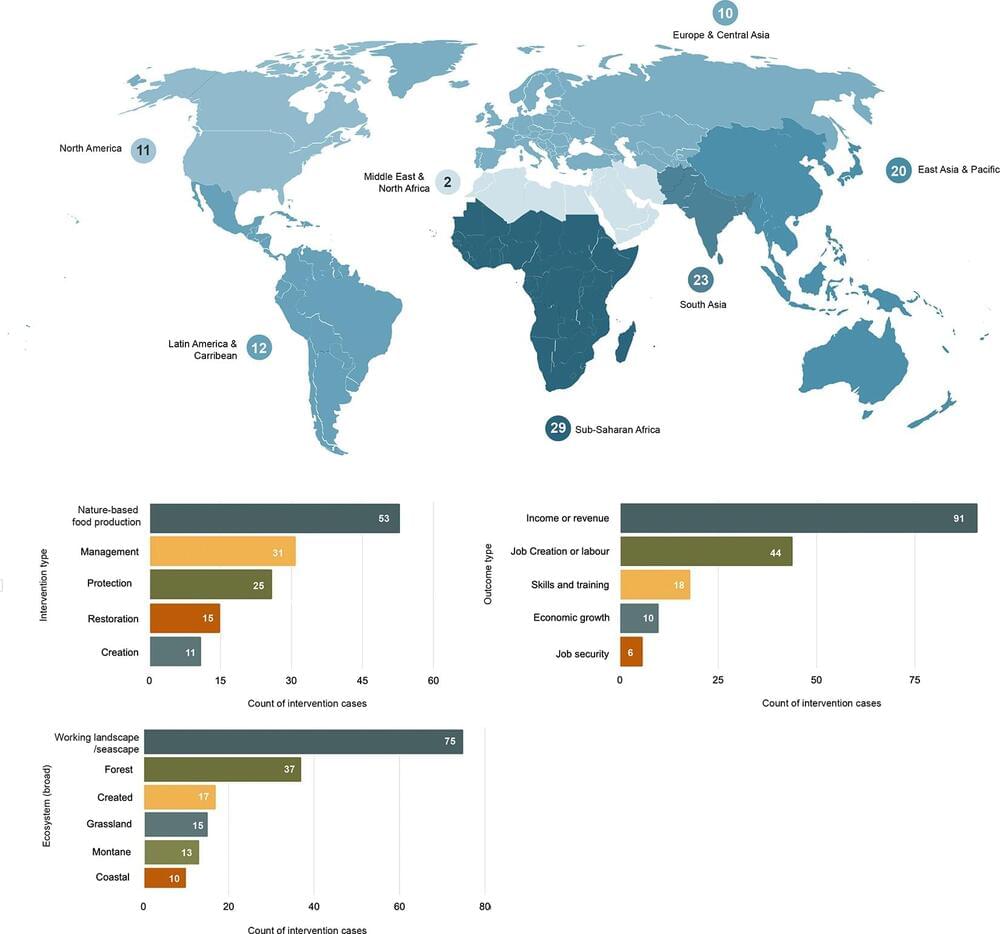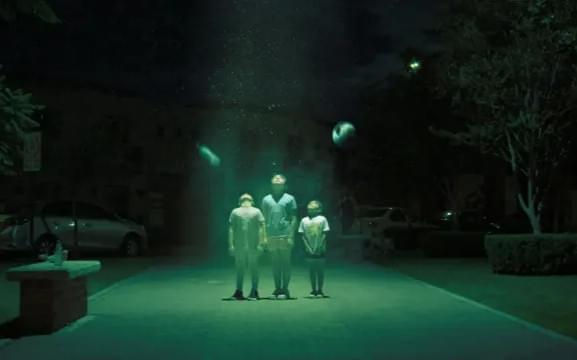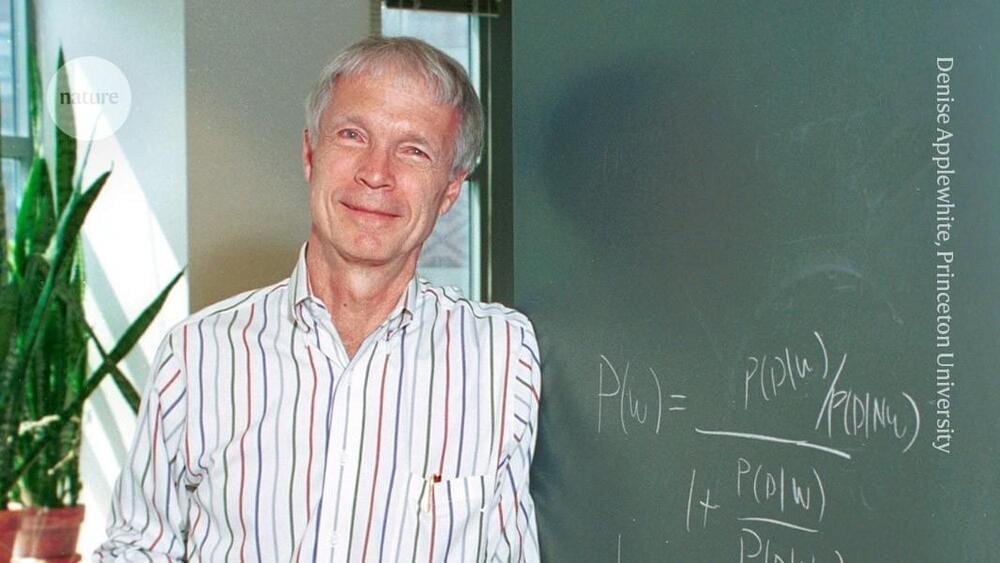A self-building sponge that efficiently collects gold could eliminate some harsh methods used to process e-waste.
By Ben Guarino

A self-building sponge that efficiently collects gold could eliminate some harsh methods used to process e-waste.
By Ben Guarino

As Candela’s P-12 gracefully flew over the waterways in Stockholm this morning, the event marked the first-ever commercial operation of a hydrofoil electric ferry.
It’s been a long time coming for the P-12, with years of development resulting in the first images of the boat released over two years ago and testing getting started only last year.
Now the first Candela P-12 in commercial operation, named “Nova”, set out this morning from Tappström, quickly reaching its destination at Stockholm City Hall. The 15 km (9 mile) journey took just 30 minutes, or around half the time it normally takes by car or public transit.

We are used to the notion of classical harmonic oscillators; these are oscillators fluctuating coherently-this is, symmetrically-around their equilibrium position, experiencing a restoring force F proportional to the displacement x following the relationship F = – kx, being k a positive constant commonly known in the mechanics of ideal springs.
If F is the only force acting on the system (which means there is no friction with the environment) the system is called a simple harmonic oscillator, and it undergoes a sinusoidal oscillations about the equilibrium point, with a constant amplitude and a constant frequency that does not depend on the amplitude.
In real life, for example in the case of a spring, we see a damped oscillation because it will decrease with time due to friction. So basically, the harmonic oscillation is a very useful idealization that allows to simplify many physical problems.

EngineAI’s SE01 humanoid robot redefines robotics with its smooth, human-like movement powered by advanced AI neural networks, showcasing a new level of realism in robotic technology. Clone Robotics pushes the boundaries further, creating a lifelike torso with synthetic muscles and joints that replicate the human musculoskeletal system, setting a new standard in AI-driven, realistic robotics. These innovations from EngineAI and Clone Robotics are transforming the future of humanoid robots, bringing AI and robotics closer to lifelike androids capable of human-like behavior, movement, and dexterity.
🔍 Key Topics Covered:
EngineAI’s groundbreaking humanoid robot, SE01, with AI-driven natural movement that mimics human gait.
Clone Robotics’ advanced torso robot, featuring synthetic muscles and joints for lifelike movement.
Real-world applications and implications for humanoid robots in industries, education, and daily life.
🎥 What You’ll Learn:
How EngineAI achieved smooth, human-like movement in SE01 through a unique neural network approach.
Clone Robotics’ development of a lifelike torso that mirrors the human musculoskeletal structure.
The future of humanoid robots as they move beyond warehouses, with potential roles in schools, hospitals, and even homes.
📊 Why This Matters:
This video dives into the latest advancements in humanoid robotics, revealing how companies like EngineAI and Clone Robotics are pushing the limits of AI and robotics. As robots grow more human-like, their potential to revolutionize industries and daily life becomes increasingly real.
DISCLAIMER:
This video explores EngineAI’s SE01 and Clone Robotics’ torso robot, highlighting their remarkable strides in lifelike robotics. Anyone curious about AI, robotics, and the future of humanoid technology will find this information insightful.
Timestamps:
SNMREC is initiating a pioneering feasibility study to establish an offshore ocean current test facility in Palm Beach County, marking a first-of-its-kind project that utilizes top marine energy expertise.
Bioelectric networks as targets for regenerative medicine.


An exploration of the unsettling possibility we live in a universe of ancient galactic wars, ruins, relics, and leftover war machines scattered across the cosmos.
Watch my exclusive video Caretaker AI \& Genus Loci: https://nebula.tv/videos/isaacarthur–… Get Nebula using my link for 40% off an annual subscription: https://go.nebula.tv/isaacarthur.
Get a Lifetime Membership to Nebula for only $300: https://go.nebula.tv/lifetime?ref=isa… Use the link gift.nebula.tv/isaacarthur to give a year of Nebula to a friend for just $30.
Visit our Website: http://www.isaacarthur.net.
Join Nebula: https://go.nebula.tv/isaacarthur.
Support us on Patreon: / isaacarthur.
Support us on Subscribestar: https://www.subscribestar.com/isaac-a…
Facebook Group: / 1583992725237264
Reddit: / isaacarthur.
Twitter: / isaac_a_arthur on Twitter and RT our future content.
SFIA Discord Server: / discord.
Credits:
Ghost Armadas \& Primordial Galactic Wars.
Episode 471; October 31, 2024
Produced, Narrated \& Written: Isaac Arthur.
Editors: Lukas Konecny.
Graphics:
Darth Biomech.
Jeremy Jozwik.
Legiontech Studios.
Mihail Yordanov.
Udo Schroeter.
Select imagery/video supplied by Getty Images.
Music Courtesy of Epidemic Sound http://epidemicsound.com/creator